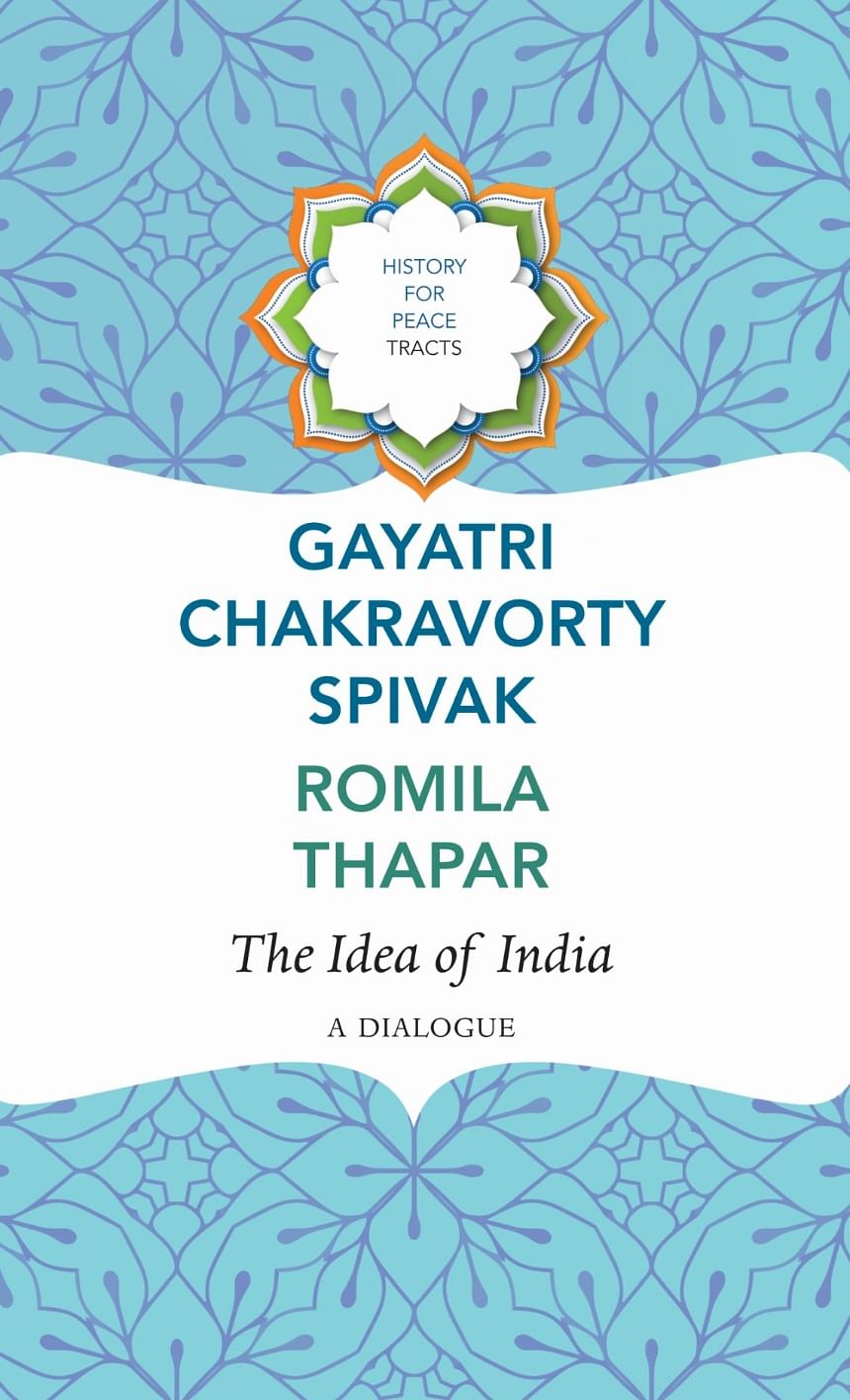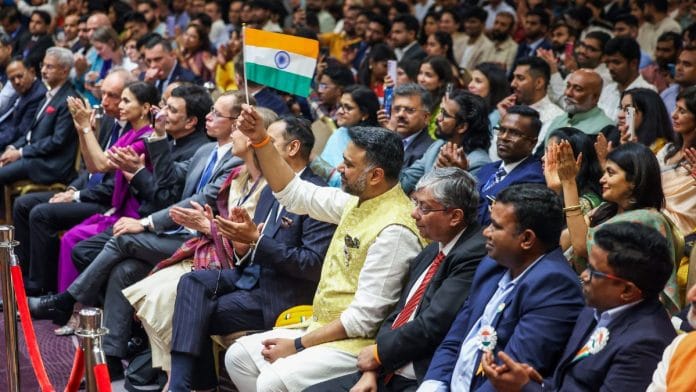Spivak: So how do we re-negotiate the idea of India as a safe idea? The present prime minister was just in the United States. Luckily, I wasn’t. There we have a certain kind of solidarity emerging which is extremely frightening.
Therefore, I just wanted to get that in, in terms of the problems from outside, which is not only not disappearing but also increasing. And now, I want to hear a bit more about what you think of as a list of problems.
Thapar: One of the problems you’ve touched upon in the notion of the idea of India, or the idea of any place for that matter, is of course that the idea changes—it’s not the same all the time.
The idea of India that I had in 1947 has changed. Reality begins to impinge on the idea, and the idea takes on a different kind of shape. In the 50s and 60s, the diaspora was seen as something relatively marginal to begin with, it was seen as disgruntled people who are not very happy over here, who are pushing off there because they’re getting better jobs and leading a better life. Initially, of course—and I know the UK better than the US—it was a different group of people who went. It was the sailors, and some members of the working class who were especially taken to do specific jobs. Their presence was absolutely marginal. But when it began to change, when professionals started going and the middle-class migrated, then two things happened, as happens even now. One: they did so well that they became, as it were, the role models for the middle class here, and their attitudes therefore became extremely influential. Interestingly, also, they developed a culture which was divorced from the culture of the host country. The culture of the diaspora is a very specific culture—it doesn’t really feed into or draw on the culture of the host country, but remains separated, initially at least. My guess is that as long as there isn’t a critical mass of Indians in American politics or British politics, or there isn’t a lot of intermarriage, it will remain a distinctive community. I may be wrong about this. So, what happens in the diaspora is not something that is to be dismissed. And much of what one might call cultural or religious attitudes of the diaspora tend to have a very direct influence on the middle class here. And, of course, we know that the middle class today has completely different ideas and ideals than it had in the 60s. I’m always very intrigued by the fact that, on occasion when I switch on the television to watch the news, there are advertisements for private universities. Very often, they show lavish laboratories, foreign scholars coming to lecture. Describing the university, they announce loudly, ‘Your destination: Success.’ I always ask myself: Surely, the destination of a university is learning, knowledge, thinking. How does it become success? And what is meant by success? Is it making money and having power? And I think that is a very distinctive difference that has crept in.
But I’m going off a little bit. We were talking about what was it that caused a lot of change. I mentioned how there was a tremendous obsession with economic growth and economic change—very legitimate, but it tended not to give enough attention to religion and language and to what is generally described as cultural articulation. There was a tendency to assume that religion is not very important in India, that the political message is much more important. That if we can solve the economic problems, we can solve all the others. Language became a problem, and it was finally solved in the way in which democracy solves all its problems—that is, the numbers in support of linguistic states were counted, and the majority opinion accepted. What linguistic states have done is another issue, is another question, and I think one that impinges very much on the notion of nationalism in the country. Then, of course, there’s the cultural idiom which always tends to be associated in India with the coming in of religion, whether it really is or not. And by this I mean that when people define Indian culture, and this relates a little bit to what you were saying, the idea is not to ask, ‘What is the culture of the entire Indian society? What is the culture from top to bottom?’ It’s always only the culture at the top—that becomes the identity, that becomes the Indian identity. And, in fact, many of the problems we’re facing today are precisely because that identity is not sufficiently broad. The identity has not been discussed and debated sufficiently in order to arrive at a point where one can say that, ‘Yes, this is perhaps not the ideal identity, but it does approximate the ideas that most people have of what they mean when they say “I am an Indian”.’
As a historian, I see this as a heritage of the colonial view of India and Indian culture: the two-nation theory underlined the perspectives on culture and theory as devolving from the Hindu and Muslim communities in a strictly religious sense. Looking beyond the elite was thought to be unnecessary.
Spivak: It seems to me also that the idea of India is quite often metonymic of one’s language group. The Indians who speak about India abroad quite often have no clue about the fact that it is an extremely multi-everything place. Forget about class and caste—just in terms of cultural differentiation . . . And I think that’s a major problem.
 This excerpt from The Idea of India: A Dialogue, by Romila Thapar and Gayatri Chakravorty Spivak has been published with permission from Seagull India.
This excerpt from The Idea of India: A Dialogue, by Romila Thapar and Gayatri Chakravorty Spivak has been published with permission from Seagull India.







Religion was not important in 1960s per the so called scholar Romilla thalar ….never mind that the country was in 1960s partition was only 20 yrs back and Yusuf khan had to take on name Dilip Kumar !!
Let alone be deemed a historian, Ms Thappar does not fit basic criteria of being called educated. The Print can give her all the space and publicity they want. Her era of Sarkari history is over.